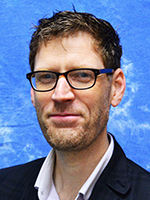20 Jan UND medical researchers bring the fight home
North Dakota Statewide Cancer Registry racks up awards and recognitions for documenting cancer incidence in the state
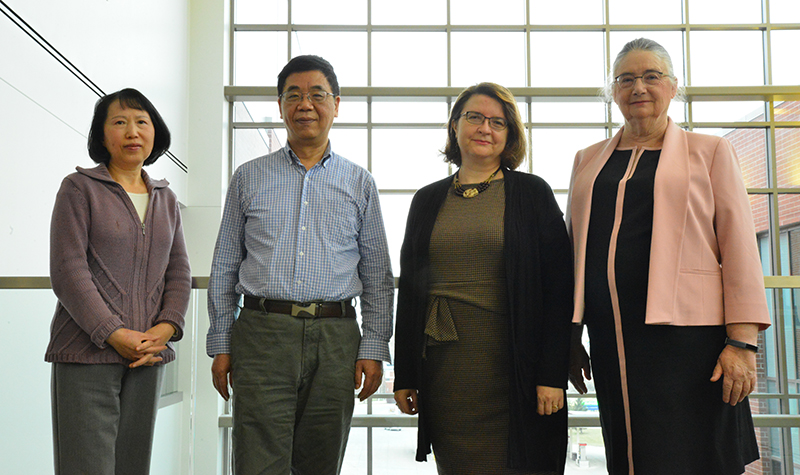
From left to right, Yun (Lucy) Zheng, Xudong Zhou, Cristina Oancea and Mary Ann Sens make up the core of North Dakota’s Statewide Cancer Registry. Since 2012, UND’s Department of Pathology in the School of Medicine of Health Sciences has been responsible for maintaining the state’s registry of cancer diagnoses, treatments and deaths. Image courtesy of UND School of Medicine & Health Sciences.
In the so-called “Copenhagen Interpretation” of quantum mechanics, developed originally by Niels Bohr and Werner Heisenberg in the 1920s, the outcome of any scientific measurement can be described only in terms of probability.
This inability to truly “know” with precision what is happening inside any atom, object, or body at a given moment gave rise to a series of often frustrating maxims, including “entanglement” and Heisenberg’s uncertainty principle, that read more like philosophy than physics.
So confident was Heisenberg of the effect scientists-observers had on the objects of their research, in fact, that he soon went on to question the very reliability of scientific observation itself.
“The scientific method of analysing, explaining and classifying has become conscious of its limitations, which arise out of the fact that by its intervention science alters and refashions the object of investigation,” Heisenberg wrote with an ironic certainty in The Physicist’s Conception of Nature (1958). “In other words, method and object can no longer be separated.”
Well, don’t tell any of this to Mary Ann Sens, Yun (Lucy) Zheng, Cristina Oancea, and Xudong Zhou.
This quartet of professors at the UND School of Medicine & Health Sciences (SMHS) is the core of North Dakota’s Statewide Cancer Registry (NDSCR), the express purpose of which is making order out of the disorder and uncertainty of cancer.
Getting off the ground
While not distancing themselves from the debates in quantum physics, the three pathologists and lead epidemiologist (Oancea) see it as their mission to track and analyze the incidence, distribution, and perhaps even probability of cancer diagnoses and outcomes in North Dakota.
It makes sense that UND would put so much energy into studying and tracking cancer, an uncontrolled and often unpredictable growth and spread of abnormal cells. The umbrella term describing at least 100 “entangled” diseases is the leading cause of death for people ages 35-64 in the Dakotas, and its incidence can be nearly double for American Indians, relative to the rest of the population.
And although most cancers have known or suspected risk factors associated with them, cancer occurrence is almost always the result of an uncertain, and even unpredictable, combination of interconnected factors stretching from one’s lifestyle and genetics to the environment.
Despite this apparent randomness, cancer research — from prevention and diagnosis to treatment and tracking — has come a long way since President Nixon declared war on cancer in 1971. Many risk factors and preventive measures have been identified, and treatments have been developed.
Because cancer is still a problem, though, registries are increasingly seen as coequal players in the fight.

Mary Ann Sens
“The North Dakota Department of Health kept the original state registry, but when the registry’s founder retired, they wanted to divest the institution,” explained Sens, UND Department of Pathology chair, describing the tool established in 1994 through a grant from the Centers for Disease Control & Prevention (CDC). “They knew we had a registry for cancer research and a medical school [at UND]. The infrastructure was here, and we built it up. I came to Lucy and Xudong and said, ‘You have two months to study for and pass the [Certified Tumor Registrar] test’ — and they did!”
On the authorization of the North Dakota Century Code (Section 23-07-01) and the state’s Department of Health, then, the North Dakota Statewide Cancer Registry collects information about new cancer cases, the course of cancer treatment, and cancer deaths. The UND Department of Pathology became the state’s bona fide agent and assumed responsibility for the operation and maintenance of the cancer registry on July 1, 2012.
This means that all hospitals, laboratories, physicians, and other health care providers are required by state law to report all newly diagnosed or treated cancer patients. Such data is collected and kept in the registry’s secure database, and is used to monitor cancer trends, promote research, increase survival, inform program development and interventions, influence policy, and respond to citizen concerns.
“It’s very important for North Dakota to be accurately represented with cancer data relative to other states,” continued Sens. “It’s been very encouraging to see how excellent we are across the board in reporting and accuracy. It helps all of us because it helps us be better represented nationally.”
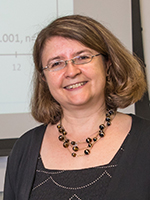
Cristina Oancea
And this group’s work helps physicians, researchers, and policymakers around the world better understand the cause and prevention of at least some cancers.
Since taking over Registry operations in 2012, the team at UND has already identified radon exposure as a risk factor for chronic lymphocytic leukemia (CLL), a type of bone marrow cancer occurring mostly in persons over age 50, and identified an increase in colorectal cancer among persons age 20-49 — previously deemed “too young” for such a disease.
“We have a serious problem with colorectal cancer among young adults,” added Oancea. “[Our work is helping] physicians pay more attention to these symptoms in young adults and allows them to know the risk of colorectal cancer.”
Award-winning
This is why such efforts are being recognized. NDSCR has been identified repeatedly by the CDC’s National Program of Cancer Registries for its achievement in meeting their standards for data completeness, timeliness, and quality. Meeting these standards allows the NDSCR’s data to be included in the United States Cancer Statistics report.
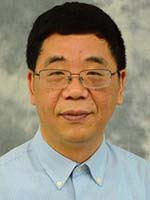
Xudong Zhou
And in August 2019, the NDSCR once again received Gold Certification from the North American Association of Central Cancer Registries (NAACCR), marking the seventh consecutive year that the NDSCR has received gold-level certification.
“The evaluation of central cancer registry incidence data recognizes population-based cancer registries that have achieved excellence in the areas of completeness of case determination, data quality, and timeliness,” Sens said in a news release that followed the award’s announcement at the time.
“Achieving this level for seven years straight is a testament to the exceptional team we have in place in North Dakota doing this vital work.”
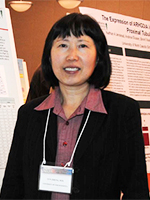
Yun Zheng
In addition to the registry’s Gold Certification, Zheng, a dermatologist by training and associate professor in the Department of Pathology, was awarded the “NAACCR Committee Member 2018-2019” award by the NAACCR for her work on participating in the development of a Virtual Pooled Registry Cancer Linkage System (VPR-CLS). The VPR-CLS is a new, secure, online system where researchers in the state can link cancer study cohort data with registries around the U.S. using a standard linkage process and software.
“It was definitely an honor and a surprise to be awarded by the NAACCR,” Zheng said. “We take this role very seriously and are happy that our efforts are being recognized nationally.”
Furthermore, the efforts in North Dakota have come to serve as a case study for the CDC. In their online primer on cancer registries, the CDC includes the example “North Dakota: Is a Cancer Cluster Real?” to explain the epidemiology of cancer clustering.
“In 2013, a concerned citizen in a small town in rural North Dakota asked the North Dakota Cancer Registry why so many people seemed to be getting cancer there,” wrote the CDC. “Scientists used their knowledge of diseases, the environment, lifestyle factors, and statistics to investigate this possible cancer cluster (a higher than expected number of cancer cases among a group of people or in a geographic area). The registry was able to ease the county’s concerns. After review, there was no link between this rural community and the cancer.”
Less uncertainty
It’s perhaps ironic that Werner Heisenberg died of kidney cancer in 1976, only a few short years after the National Cancer Act became law in the United States. In a way, it was his own theorizing on the uncertainty of the movement and function of particles at the atomic and subatomic level that anticipated the illness that ended his life.
The physics of uncertainty notwithstanding, the team at North Dakota’s Cancer Registry is determined to continue to reduce the probability of cancer in the Dakotas and beyond.
“We get cancer data for all North Dakotans, no matter where they got treated,” said Sens, explaining how cancer registries are uniquely collaborative institutions. “We make sure the data is accurate and not duplicated. There’s no other registry that I’m aware of — trauma registry, neurologic registry — that has that high level of collating. They tend not to have that second step we have, which puts a level of quality into it.”
“Everybody can relate to cancer; everybody knows someone with cancer,” Oancea added. “It gives us purpose to do what we do. We know there’s a person behind every number, and that’s what makes this work important for us.”
That much, at least, is certain.
About the author
